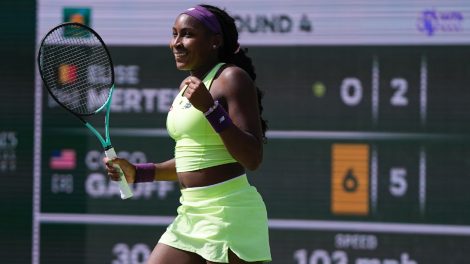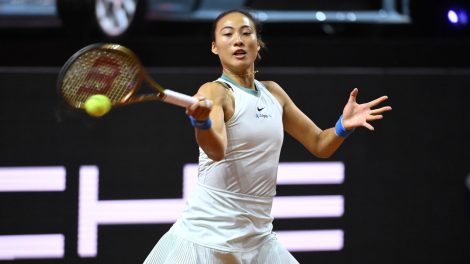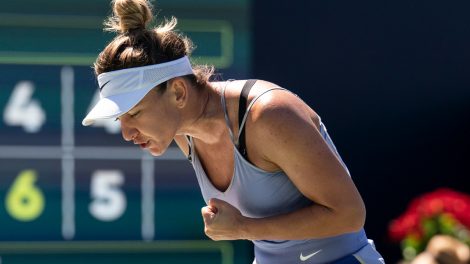The old guard is the best guard in men’s tennis, but a new day has dawned on the women’s side.
For the eighth time in a Grand Slam final and a record 53rd time overall, Novak Djokovic and Rafael Nadal did battle, while Naomi Osaka laid claim as the heiress to Serena Williams’ Iron WTA Throne.
The Canadians had their turn in the Melbourne sunshine as well, but here are the six biggest takeaways from the fortnight that was at the 2019 Australian Open.
Nadal’s new and improved serve no match for the greatest returner of all-time
This was the heavyweight clash every tennis fan was waiting for. After a lacklustre men’s side of the draw saw Djokovic and Nadal bludgeon all who dared step in their path, the World No. 1 and World. No. 2 did battle in the final. Seventeen Grand Slam singles titles vs. 14. The record for longest Grand Slam final match (by duration) was set by these two gentlemen at this very tournament six years ago at a mammoth five hours and 54 minutes.
All the talk entering and throughout the tournament was Nadal’s remodeled serve and improved ability to finish points quicker. The result: 66 straight holds entering the final and not a set lost.
Djokovic was having none of it. Broken in his very first service game, Nadal lost the first set and was made to look helpless to the Serbian’s onslaught just as he had done to the Next Gen in the lead-up to this final.

As history indicated, it was Djokovic’s match to lose from there, but he didn’t just play to not lose. A completely surgical destruction of one of the game’s all-time greats ensued, and — shockingly — three sets was all that was needed for Djokovic to clinch a record seventh Australian Open singles title
His 15th major title moves him ahead of Pete Sampras, two behind Nadal, and five behind Roger Federer.
Retirement buzkill
The tournament began with the news that Andy Murray would likely be playing in Melbourne for one final time and by the end of Week 1, it was Federer announcing he will return to the French Open after a three-year hiatus to prevent wear and tear, increasing the likelihood that the Swiss maestro will bid farewell to the game at the end of 2019.
The losses to Kevin Anderson, John Millman and Stefanos Tsitsipas at the last three majors show the air of invincibility about the 37-year-old has vanished, and with the Laver Cup in Geneva, Switzerland this year, it seems the perfect way to cap off a GOAT career.
Serena’s pursuit of Margaret Court continues
Speaking of GOATs, as much as winning 23 Grand Slam singles titles may make winning seem easy, that’s simply not true.
Chasing No. 24, which would tie Court for the most major singles titles won by either a man or a woman, Serena Williams came up against Simona Halep first, and then Karolina Pliskova who both did everything in their power to derail her hopes.
First, billed as the world’s best up against the world’s greatest, the match between Williams and Halep delivered in spades after a disappointing start. Williams took the first set 6-1 in just 20 minutes, before the Romanian stormed back with laser-like backhands to force a third and final set.
Just as Halep was challenged to dig deep and find another level, Williams was dared to do the same and came up with the goods. Back and forth they went, crushing the ball at every opportunity, before Williams finally broke through and held on to serve out a 6-4 final set that had the crowd on the edge of their seat.
Riding that high, Williams went into her match against Karolina Pliskova as favourite, and up 5-1, 40-30 in the final set, looked poised for a rematch with Osaka in the semifinals. But in a shocking turn of events, the Czech native went for broke, saved four match points, won game after game, and eventually six straight to take the third 7-5 and move on.
Williams turned her ankle but gave no excuses after the match, insisting she was fine to play and gave credit to her opponent. Class.
Osaka is the best, literally
By winning the Australian Open, Osaka not only claimed her second career Grand Slam singles title, but also clinched the World No. 1 ranking for the first time in her career.
The accomplishment puts the cherry on top of a meteoric rise for the 21-year-old who was 72nd in the world just a year ago.
By winning #AusOpen, Naomi Osaka breaks a streak of eight different major winners in the previous eight tournaments:
2017 Serena
2017 Ostapenko
2017 Muguruza
2017 Stephens
2018 Wozniacki
2018 Halep
2018 Kerber
2018 Osaka
2019 Osaka— Ben Rothenberg (@BenRothenberg) January 26, 2019
Her innocent, almost child-like mannerisms have made her impossible to root against, while also creating some extremely GIF-able moments.
Osaka (@Eurosport_RU ) pic.twitter.com/U1Xq1QDqFJ
— doublefault28 (@doublefault28) January 24, 2019
(@Eurosport_RU ) pic.twitter.com/vPGiD7uw1t
— doublefault28 (@doublefault28) January 26, 2019
The Japanese star isn’t afraid to stand for what’s right, either, letting her disappointment be known after one of her now many sponsors, Nissin, portrayed her inacurrately.
Naomi Osaka: Tennis star responds to 'whitewashed' ad https://t.co/jLrxvMI9R0
— BBC News (World) (@BBCWorld) January 24, 2019
The new face of women’s tennis, Osaka is the standard that Williams, Halep and everyone else is now chasing.
Super tie-break makes controversial debut
With Grand Slam organizers forced to look in the mirror after some of the extended, exhausting final set battles over the past decade in particular (see: John Isner), the Australian Open introduced a super tie-break for final sets that are tied at six games apiece.
The super tie-break made an appearance in the fourth round match between Kei Nishikori and Pablo Carreno Busta, and an umpiring decision arguably changed the outcome of the match. With Carreno Busta up 8-5 in the super tie-break (one more point than he would have needed to win a traditional tie-break), the chair umpire awarded a point to Nishikori after an overruled call when the rule is clear that the point should have been replayed.
Furious and completely thrown off his game after five arduous hours, the usually calm and mild-mannered Carreno Busta lost five straight points to exit the tournament in unprecedented fashion.
Petra Kvitova has found her second wind
There is no better story.
After the tragedy of getting attacked in her own home by a man with a knife looking to stage a robbery, the severe injuries Kvitova sustained to her playing hand left many wondering if she would be able to return to the court at all, let alone compete at the level that saw her finish 2011, 2012 and 2015 as the second-ranked player on the WTA Tour.
Right from the get-go, though, she vowed to be back.
“In my attempt to defend myself, I was badly injured on my left hand,” Kvitova wrote in a statement on her Facebook page after the attack. “I am shaken, but fortunate to be alive. The injury is severe and I will need to see specialists, but if you know anything about me, I am strong and I will fight this.”
Here we are, just over two years since the incident, and Kvitova is the second-best player in the world and an Australian Open finalist.
“I mean, I’ve been through many, many things. Not really great ones,” Kvitova said after the final. “I didn’t know if I (was) going to hold the racket again. I’m holding it, so that’s good.”
She believed, and losing in the final takes nothing away from what she achieved in Melbourne.
[relatedlinks]










